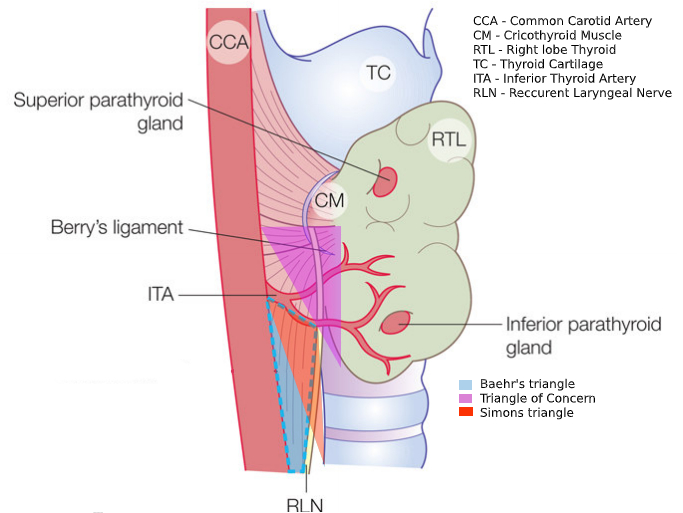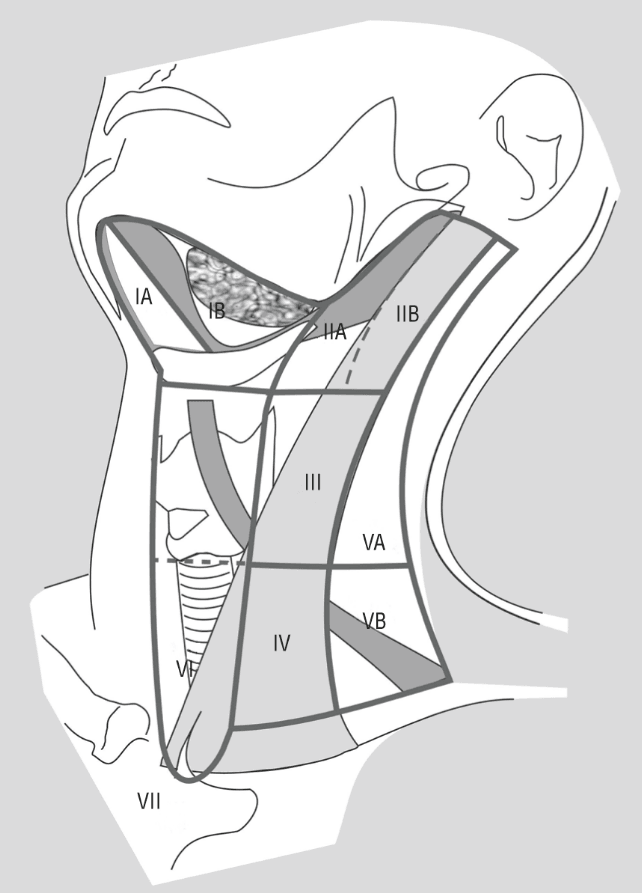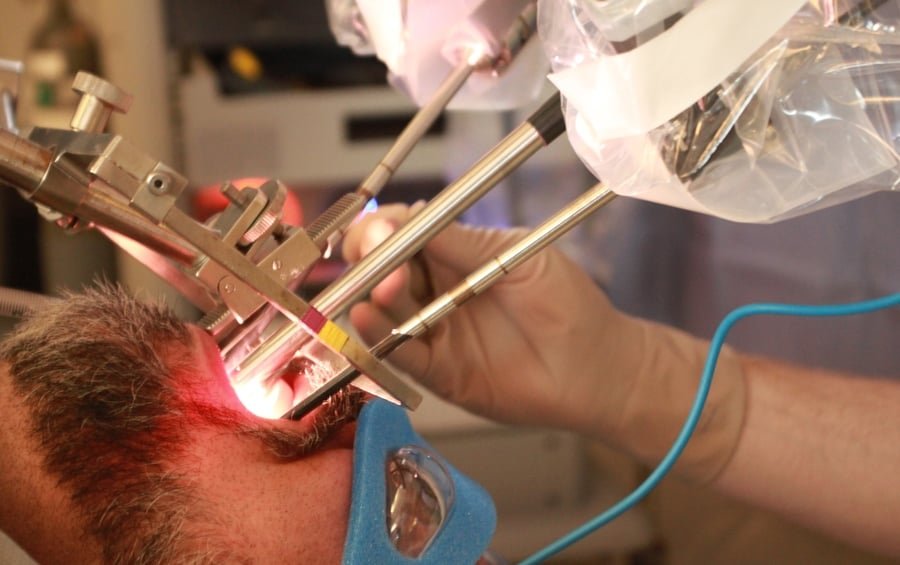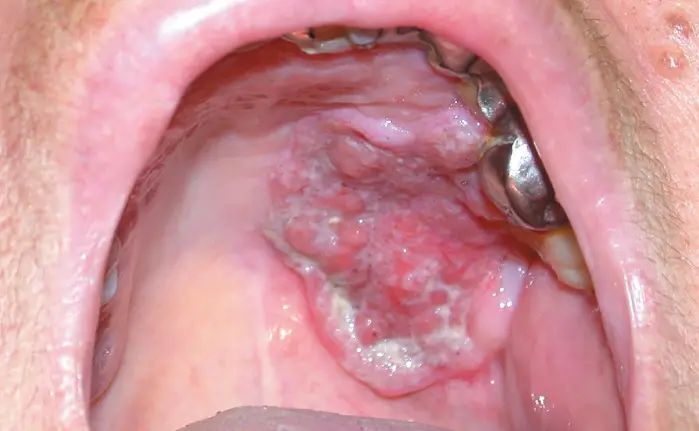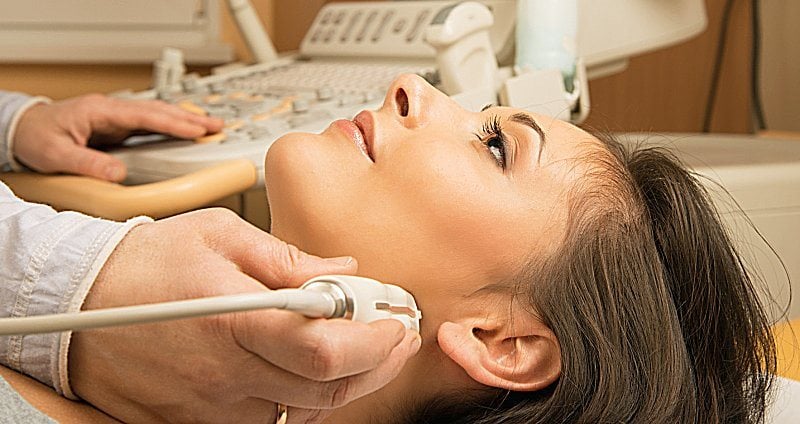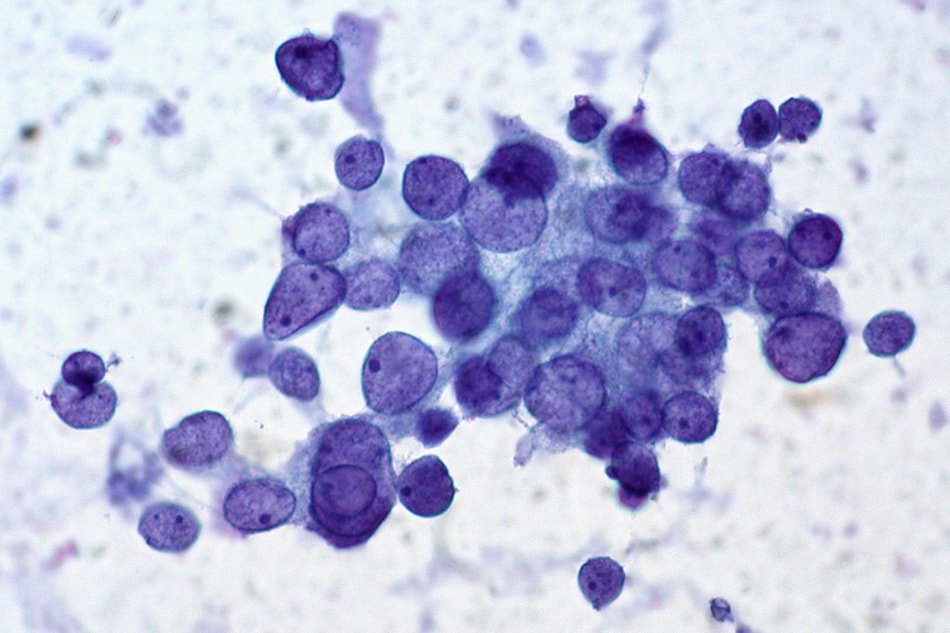തൈറോയ്ഡ് ക്യാൻസർ – അറിയേണ്ടത്
തൈറോയ്ഡ് ഗ്രന്ഥി എന്നത് ചിത്രശലഭത്തിന്റെ ആകൃതിയിൽ കഴുത്തിന്റെ മുന്നിൽ ആയി സ്ഥിതി ചെയുന്ന ഒരു ഗ്രന്ഥിയാണ്. തൈറോയ്ഡ് ഹോർമോണുകൾ ഉൽപാദിപ്പിക്കുക എന്നതാണ് തൈറോയ്ഡ് ഗ്രന്ഥിയുടെ ജോലി. അത് രക്തത്തിലേക്ക് സ്രവിക്കുകയും പിന്നീട് ശരീരത്തിലെ എല്ലാ കോശങ്ങളിലേക്കും എത്തുകയും ചെയ്യുന്നു. തൈറോയ്ഡ് ഹോർമോൺ […]
Posted on
Updated Guidelines for Management of Thyroid Disease in Adults
Thyroidectomy is a commonly performed surgical procedure for the partial/complete removal of the thyroid gland. According to the United states data, over 100,000 thyroid operations are performed annually in the […]
Posted on
Important Triangles in Thyroid Surgery
Thyroidectomy is a surgical procedure involving removal of the thyroid glands. The procedure can be a hemi-thyroidectomy (partial removal) or can be a total thyroidectomy. The most important thing about […]
Posted on
TNM Staging of Salivary Gland Cancers
Once a person is diagnosed with cancer, the next step before deciding on treatment options is a determination of the stage of the cancer. Staging of salivary gland cancers is […]
Posted on
Classifications of Neck Dissection
Neck dissection (ND) is a complex surgical operation involving the removal of potential or proven metastases to cervical lymph nodes. The aim of the procedure is to remove lymph nodes […]
Posted on
Inverted Papilloma – Clinical features, Diagnosis and Treatment
Inverted papilloma is a rare, benign but locally aggressive neoplasm that arises in the Schneiderian epithelium which lines the nasal cavity and paranasal sinuses. It is also known as Ringertz […]
Posted on
Radiotherapy is better than TORS for Oropharyngeal Cancers – ORATOR Says
The mainstay of treatment for oropharyngeal squamous cell carcinoma is chemoradiotherapy. The separation of oropharyngeal cancers into Human papillomavirus (HPV) positive and negative based on the etiology has shown that […]
Posted on
Role of Surgery in the Treatment of Oropharyngeal Cancers
Prior to 1990, the mainstay of treatment for oropharyngeal cancers were surgeries. These large, invasive, open approaches like mandibulotomy, tongue pull through (described below), etc were associated with severe compromise […]
Posted on
First bite syndrome – Clinical presentation, Diagnosis and Treatment
First bite syndrome is a clinical condition occurring as a complication of surgeries involving the infratemporal fossa, deep lobe of the parotid gland, parapharyngeal spaces and manipulation or ligature of […]
Posted on
Thyroid Imaging Reporting and Data System (TI-RADS)
Thyroid nodules are extremely common with a reported prevalence ranging between 8.2% and 64.6% in autopsies and 19% to 68% in adults on high-resolution ultrasound. Most of the time, thyroid […]
Posted on
ATA Risk Stratification for Differentiated Thyroid Cancers
Thyroid cancer is the most common endocrine malignancy, and the prevalence of differentiated thyroid cancer is becoming increasing worldwide. Among the differentiated thyroid cancers (DTC) papillary thyroid cancer (PTC) and […]
Posted on
AJCC / TNM Staging of thyroid cancers
After the diagnosis of any cancer in the body, doctors stage cancer. Staging of thyroid cancers describes how big it is and whether it has spread to any other parts […]
Posted on
Histopathological Variants of Papillary Carcinoma Thyroid
Papillary carcinoma thyroid (PTC) is the most common differentiated malignancy of thyroid gland. Depending on the different histopathological patterns, cell types and clinical features different variants of papillary carcinoma thyroid […]
Posted on
Neoadjuvant Chemotherapy in Head and Neck Cancers
Neoadjuvant chemotherapy (NACT); also called Induction chemotherapy is a treatment option in cancer therapy, in which chemotherapy is given prior to the definitive treatment like surgery or radiotherapy. Neoadjuvant chemotherapy […]
Posted on

